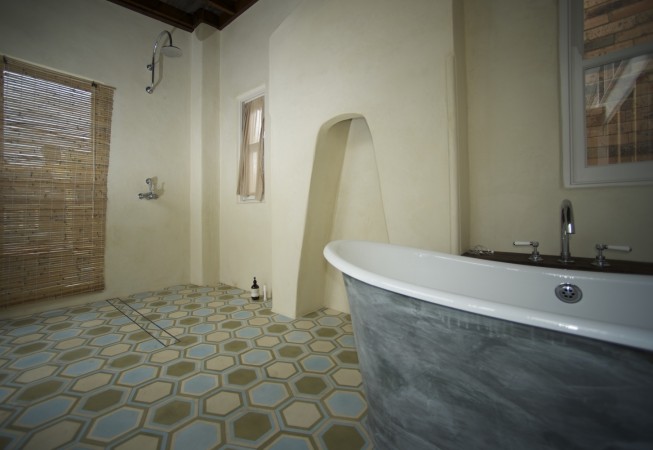The Tadelakt manufacturing process and its application
Tadelakt is a traditional technique from the Marrakech region, Morocco. Originally used in hammams (Moorish baths) and royal palates, Tadelakt is a very smooth, waterproof lime, which offers a particularly elegant and unique aesthetic finish. The Tadelakt manufacturing and application process is complex and requires specific know-how. Here are the main lines of this process:
1. Preparation of lime
The Tadelakt is made from a special lime, extracted from the quarries around Marrakech. This lime is cooked in traditional ovens, then extinct with water to create lime in dough. This process makes it possible to obtain a flexible and malleable base, ready to be applied to the interior surfaces.
2. Preparation of the surface
The coating surface must be clean and slightly rough to ensure good adhesion of the plaster. A undercoat, often a lime or cement mortar, is applied and left to dry before applying the Tadelakt.
3. Application of Tadelakt
Tadelakt is applied in several thin layers. The first layer serves as a base and is roughly spread on the surface. Once this layer is dry, one or more additional layers are applied to obtain the desired thickness and texture. Each layer is carefully smoothed by hand or using special truelles.

4. Smoothing and polishing
After applying the last layer, the Tadelakt is smoothed and compressed using a hard stone, often a pebble, and a black soap based on olive oil. This process is crucial and contributes both to compact the material, to close its pores, and to give it its characteristic shiny appearance. Polishing is done by circular friction, and this step can be repeated several times to increase the density and shine of the surface.
5. Curation
Once the application and polishing is completed, the Tadelakt must dry slowly to reach its maximum resistance and waterproofing. This process can take several days, during which Tadelakt hardens and develops its smooth and waterproof finish.
6. Finishes and maintenance
The finished tadelakt can be left in its natural color or tinted with natural pigments before applying the last layer. To maintain its appearance and waterproofing, Tadelakt may require periodic maintenance, including new polishing with black soap and water.
Tadelakt is appreciated for its natural beauty, its soft texture, and its ability to create surfaces without joints, thus offering unique visual continuity. Although traditionally used in interiors, its water resistance also makes it suitable for bathrooms, kitchens, and even swimming pools, adding a touch of elegance and exoticism.
We have just described the traditional Moroccan technique in this article. Specialist with lime specialist, has developed a formulation that meets all the technical requirements of contemporary use, but above all to a simplified installation accessible to all good DIY enthusiasts and that of course keeping the magnificent traditional aspect of Moroccan Tadelakt.
latest posts published

The bathroom is a space for relaxation and revitalization

Giving Wood a New Life: An Elegant and Affordable Way to Revamp Furniture and Decorative Items

Finition mate vs satinée et brillante : Guide des types de finition de peinture

Discover a Unique and Original Wallpaper Inspired by the Bestiary Décor

Choosing the Perfect Finish for Your Decorative Concrete: Options for Style and Durability

Transform Your Small Bathroom with Paint: Tips for Color, Space, and Style

Parental suite decoration: how to delimit the bathroom space

Children’s bedroom decoration

Zen Decoration: Creating a Haven of Peace


